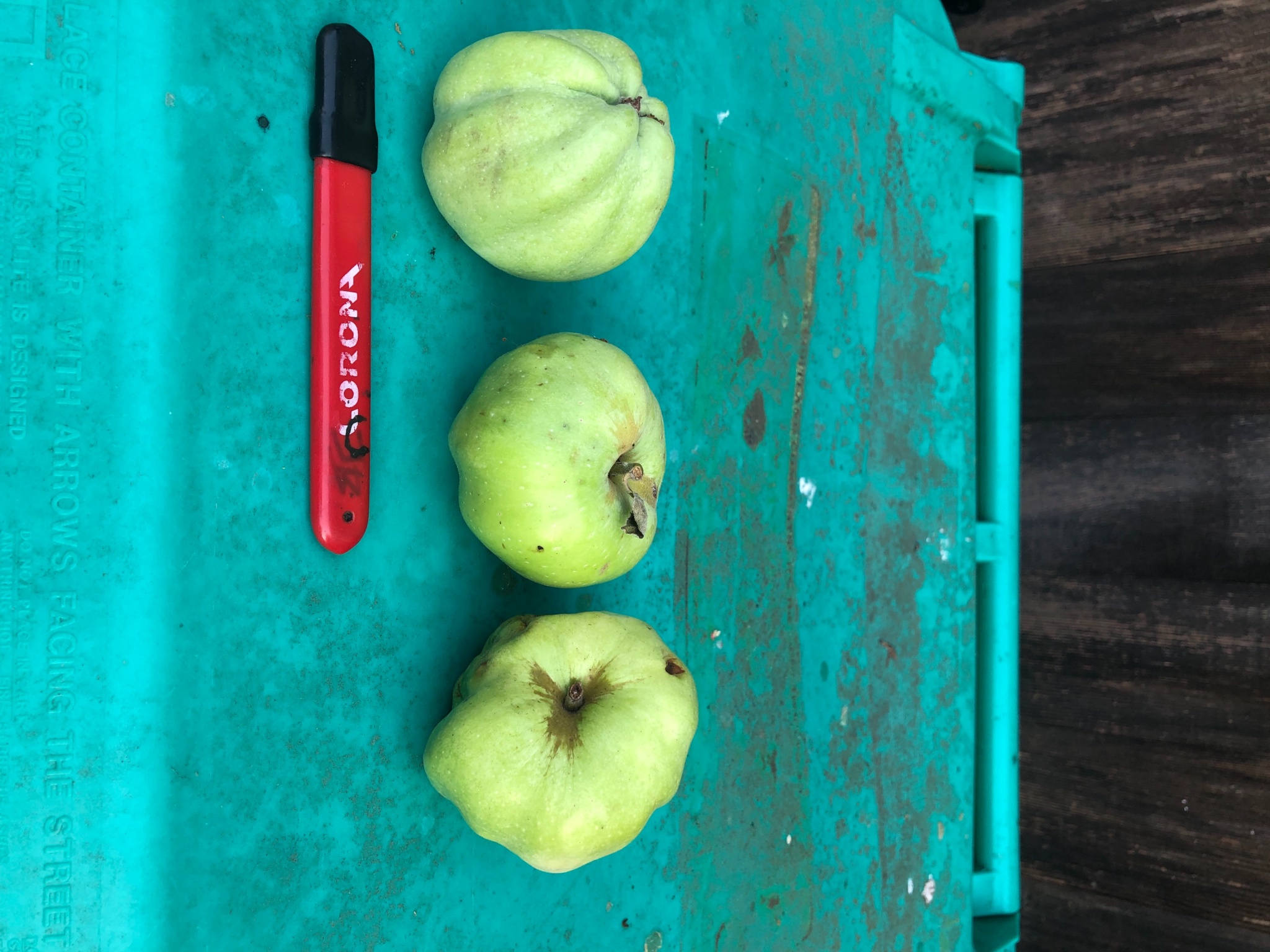I have not, in at least 15 years since the grafting had the opportunity to taste the ripe fruit of my Calville Blanc d’hiver. It is situated highest in a reworked standard from Macintosh, above a couple of Belle de Boskoop stems. I’m pretty sure the squirrels living in and traversing through the overshadowing cedar tree see the Calville from above and cannot constrain the urge to drop down and over the next month dispatch ALL the fruit set. They seem immune to learning, time after time, year after year, that the fruit is not near ripe enough to even want to eat it. Maybe squirrels are not so smart, just acrobatic, and the trait to drop them underripe fruit is the learned exercise, dropping and not so much the object of eliciting something tasty. They appear to eat just a bite or two, then it’s back to the tree to try another-in case something’s better. The previous generations did it, so, so shall we. If, in two legged human kind, we continue to repeat the same actions over and over without learning something, from observing the result, as to how to modify our behavior to achieve a more favorable result … well, you know what they say.
The Calville is a late apple, I’m thinking late November, but yes I don’t really know, never had one get ripe to be able to judge how it is (here). 


I was wondering if squirrels were the culprits behind the same problem I was having with the genetic dwarves Nectazee, Eldorado and Arctic Babe. The fruit kept turning up on the ground with a few bites out of them because they looked way more ripened than they actually were. However, when I happened to glance out the window and saw the trees shaking a closer look showed it was a pair of woodchucks who had figured out how to harvest the fruit by rattling the trees.
Zone 6a in the moraines of eastern Connecticut.
Make sure we get together before the next 2022 cycle of squirrels James. Together with the idea of testing a new strategy of making this other codling moth prevention idea that I mentioned on June-2. The pictured upload involves cutting down sections of socks they use for covering and preventing earth drift into corrugated 4 inch piping that's seen at Home depot as long black plastic. I use these now to contain all my hybrid plum and cherry seeds with an inexpensive cattle castrating band at each end. Everything in this would be re-usable from year to year by simply rolling the bands off and re-inserting with a 13 dollar expanding tool each summer. The band should contain the branch as well and it does hold my plums from splashing on the ground, in turn the raccoons sniff this out and can destroy my whole crop overnight.
Idyllwild
jafar
Marsha H
Viron
1 Guest(s)
